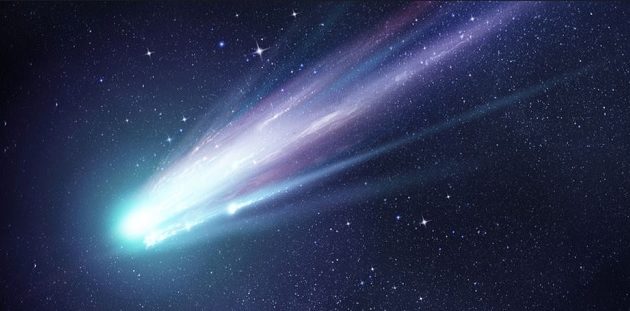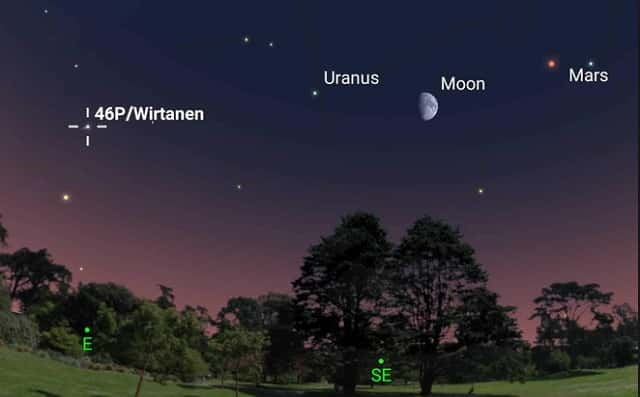
Astronomers are calling Comet 46P/Wirtanen the “comet of the year.” Less than two months from now, on Dec. 16th, the kilometer-wide ball of dirty ice will come within 7.1 million miles of Earth–making it one of the 10 closest-approaching comets of the Space Age. While that may seem like a long ways away, it is actually a close shave in space distance. The comet’s green atmosphere is, impressively, almost twice as wide as the planet Jupiter. Just to give you a sense of scale, Jupiter is 2.5 times more massive than all the rest of the planets in the Solar System combined. Jupiter’s diameter is 11.2 times larger than Earth. In other words, you could put 11.2 Earths side-by-side to match the diameter of Jupiter.

While the atmosphere of the comet is huge, the surface area is only a little less than a mile wide. The green color of the comet comes from diatomic carbon (C2)–a gaseous substance common in comet atmospheres that glows green in the near-vacuum of space. Viewing will begin to improve through November after a dramatic U-turn in its orbit moving swiftly North through Eridanus towards Taurus. This is where the comet will reach closest approach on 16 December 2018, right at the point when positioned between the Pleiades and Hayades clusters. From here on in, the comet remains in a much more favorable position for northern sky observers high up in the sky by after sunset and should remain visible through the holidays. At the moment, the integrated brightness of the comet is similar to a 10th magnitude star–that is, dim.

However, forecasters expect it to brighten more than 200-fold by December. If current trends hold, 46P could ultimately reach magnitude +3, making it visible to the unaided eye and an easy target for binoculars or small telescopes. The apparent brightness of celestial objects is on a scale that goes from the very brightest — the sun — to the dimmest. And it doesn’t go in the direction you’d think: the lower the number (negative values) the brighter the object. Current predictions are that it will be near a magnitude of three to six. If it’s a magnitude three, it should be visible even in light-polluted cities. Thankfully, in this close encounter with Earth, the comet does not pose a danger of impact with our planet. If the comet did collide with Earth it would have hundreds of thousands of times more energy than the atomic bombs dropped on Nagasaki and Hiroshima, Japan in 1945. Something like this sort of makes our everyday problems seem pretty small doesn’t it?






